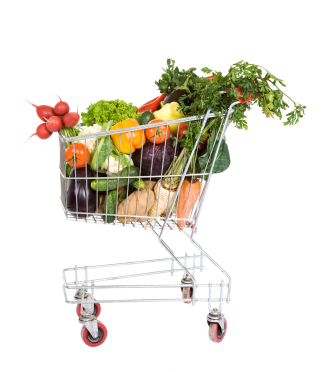Tips for a Healthy Shopping Cart
Dr. Sarah Leahy Granite
Okay, I’ll admit it – I’m a grocery cart peeper. As I roll through the store, I often find my focus straying from my cart to the carts of other shoppers, finding it fascinating what each person decides to purchase. If you’re anything like me, over the years you’ve become more and more confused as you pass through the automatic doors into the supermarket. Terms like “low-fat”, “low-carb”, and “sugar free” are thrown at you in every aisle. Today, determining which foods are actually healthy seems as simple as rocket science. All you want is to provide a healthy meal for your family, but do we even know what that means anymore? In this article I will provide you with a few key tips to navigating your local supermarket, hopefully making it out unscathed.
Whenever I shop for groceries, I try to follow three simple rules that I learned in Chiropractic College. Though they may seem very basic, these guidelines will help to weed out the real foods from their not-so-real food-like-substance counterparts. Rule #1: Stay to the perimeter of the store. Since most grocery stores are laid out in the same manner, this is one of the easiest to follow. Staying to the perimeter of the store means that you primarily shop for produce, meat/fish/poultry, and possibly dairy. Venturing into the abyss that is the center of the grocery store is where things get complicated. Here you will find aisle after aisle of packaged products, many that, even by minimal standards, only pass as food-like substances rather than actual food. Try to enter into these aisles as little as possible.
Rule #2: If your great grandmother couldn’t recognize it, you shouldn’t be eating it. As you pass through the store, try saying to yourself, “would nana know what a (insert food product here) is?” If the answer is no, which would be the case with most pre-packaged foods, please don’t put it in your cart. Food companies have become very smart over the years, able to market any food-like product to you or your children without you even realizing it. If they were to market their products honestly, and with warning labels about the health problems they could contribute to, no one would ever buy them. Would you ever knowingly feed your children products that contain ammonia, wood pulp, or substances known to cause cancer? I wouldn’t either.
Rule #3: Buy foods that contain as few ingredients as possible. Most of the foods in your diet should be ones that don’t even need ingredients labels, simply because they contain only one ingredient. It’s very easy to determine the ingredients in an apple, an egg, or a bunch of broccoli, but figuring out what is actually in Cocoa Crunchies cereal is another story. As the number of ingredients climbs, so do the odds that the product is full of additives, fillers (here’s that delicious wood pulp again), and preservatives. Yum.
Armed with these three rules, you will certainly see the grocery store in a new light. Write them down, carry them with you, and take the first steps to making your shopping cart, and your family, a little healthier.




